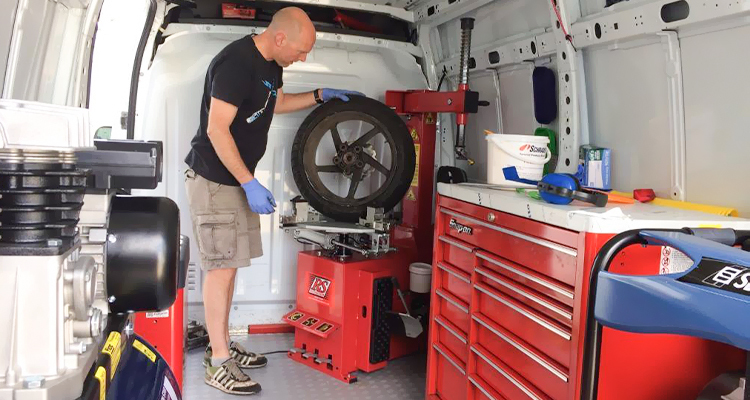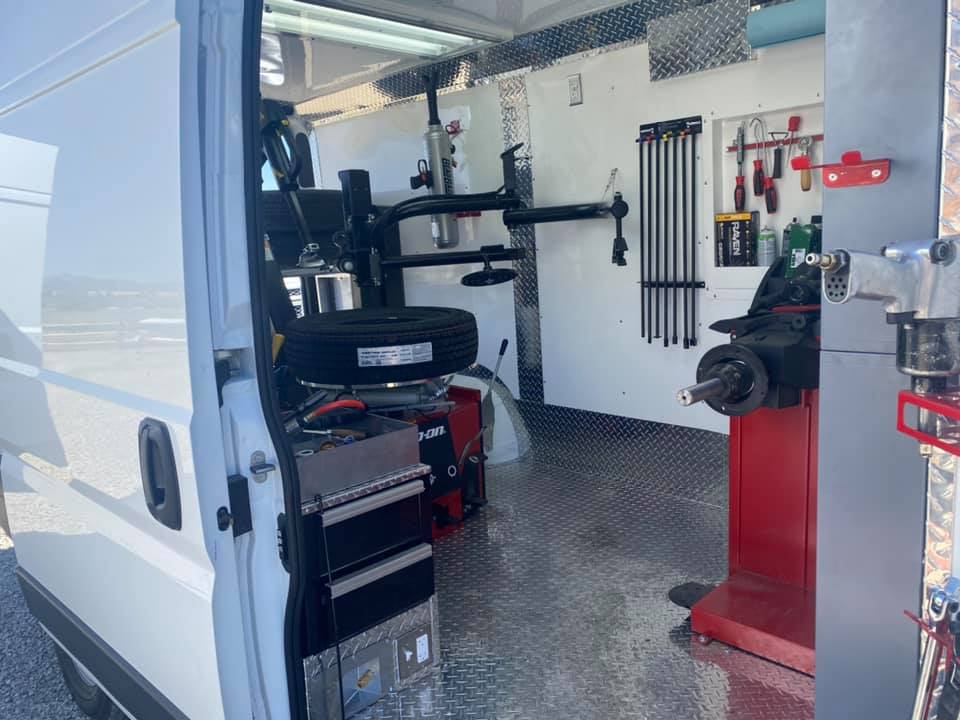Convenient Mobile Tire Service in Las Vegas at Your Doorstep
Convenient Mobile Tire Service in Las Vegas at Your Doorstep
Blog Article
Tire Solution: Proven Methods for Optimum Tire Maintenance and Treatment
Preserving optimal tire problem is paramount for both safety and security and performance of any kind of automobile. From ensuring correct tire stress to routine turning and positioning, there are tried and tested methods that can dramatically extend the life-span of your tires and enhance general driving experience. As we discover the ins and outs of tire care and maintenance, we will certainly reveal vital standards that every car proprietor should comply with for the finest feasible results. Allow's explore the world of tire solution and discover the tricks to keeping your tires in excellent form for the long run.
Value of Tire Stress
Correct tire stress is a critical element in making sure optimum lorry efficiency and safety and security when traveling. Preserving the suggested tire stress degrees given by the supplier offers various benefits. Appropriate tire pressure promotes far better fuel efficiency, as under-inflated tires can lead to increased rolling resistance, causing the engine to work harder and eat even more gas. Appropriate tire pressure ensures also step wear, improving tire longevity and conserving money in the lengthy run by postponing the need for early replacements. Additionally, properly blew up tires add to improved handling and stopping capabilities, critical for risk-free driving in various roadway conditions. Over-inflated tires, on the other hand, can cause decreased grip and a harsher trip. Conversely, under-inflated tires are vulnerable to overheating, which can bring about mishaps and blowouts. On a regular basis inspecting and readjusting tire stress, especially in the past long trips, is an easy yet reliable way to enhance vehicle performance, prolong tire lifespan, and prioritize safety when driving.
Tire Turning Guidelines
When thinking about tire rotation guidelines, it is necessary to recognize the relevance of this upkeep job in making the most of tire life expectancy and preserving optimal automobile efficiency. Tire rotation includes altering the position of each tire on a car to make sure also step wear. Front tires often tend to put on faster than back tires because of steering forces, making normal turning vital for well balanced wear patterns. The suggested rotation pattern varies relying on whether a lorry is front-wheel, rear-wheel, all-wheel, or 4x4. Usually, tires must be turned every 5,000 to 7,500 miles, or as encouraged in the automobile handbook. Ignoring tire rotation can result in uneven wear, affecting handling, grip, and potentially compromising vehicle safety and security. By sticking to proper turning standards, chauffeurs can extend the life of their tires, enhance fuel efficiency, and improve general driving experience. Normal turning is an easy yet effective upkeep practice that adds substantially to tire longevity and lorry efficiency.

Benefits of Wheel Placement
Making certain proper wheel positioning after tire turning is essential for preserving well balanced wear patterns and taking full advantage of lorry efficiency. Wheel alignment refers to the modification of the angles of the wheels to the maker's specifications. Among the crucial advantages of wheel placement is improved dealing with and steering feedback. When the wheels are effectively aligned, it reduces check this steering effort, guaranteeing a smoother and much more controlled driving experience. Furthermore, right wheel placement aids to prolong the life expectancy of your tires. Misaligned wheels can trigger unequal tire wear, causing early tire substitute and boosted upkeep expenses.

Tire Footstep Depth Check
Doing a normal inspection of tire walk deepness is necessary for maintaining risk-free driving problems and lengthening the lifespan of your tires. The tread on your tires plays a vital duty in providing traction, particularly in unsafe or damp problems. To check your tire tread depth, you can utilize a step deepness scale or the dime examination. The advised step depth is at the very least 2/32 of an inch. If the tread deepness is listed below this limit, it is time to change your tires to make certain ideal performance and safety when driving. Irregular step wear can suggest problems with tire suspension, alignment, or pressure, highlighting the importance of normal step deepness checks. Overlooking to keep track of and maintain proper tread deepness can bring about lowered grip, longer braking ranges, and a boosted danger of hydroplaning. By integrating tire tread deepness explore your routine upkeep timetable, you can drive with confidence knowing that your tires remain in leading condition.
Seasonal Tire Assessment
A comprehensive evaluation of tire condition tailored to details climate conditions is critical for maintaining optimum performance and security throughout the year. Seasonal tire examination is an essential facet of tire maintenance that guarantees tires prepare to face the reference difficulties posed by different climate problems. To prepare for wintertime, it is essential to inspect the tire stress routinely as cool temperature levels can trigger tire pressure to go down. Inspecting tire step depth is likewise crucial to make certain adequate traction on snow and frozen roads. In addition, looking for indicators of wear and tear, such as splits or lumps, can help avoid prospective tire failures. As the seasons modification, it is necessary to assess tire condition and make any required modifications to ensure risk-free driving. By carrying out regular seasonal tire examinations, vehicle drivers can lengthen tire life-span, boost gas performance, and most notably, make certain a safe driving experience in differing weather - Mobile Tire Repair Las Vegas.
Final Thought
Finally, keeping appropriate tire pressure, revolving tires on a regular basis, aligning wheels appropriately, checking walk deepness, and carrying out seasonal inspections are crucial methods for optimum tire care. By adhering to these verified techniques, motorists can ensure their tires last longer, execute far better, and add link to general car safety. It is necessary to focus on tire maintenance to protect against accidents, boost fuel effectiveness, and lengthen the lifespan of tires.
Sufficient tire pressure advertises much better fuel performance, as under-inflated tires can lead to boosted rolling resistance, causing the engine to work more challenging and eat more fuel.When thinking about tire turning standards, it is important to understand the relevance of this upkeep job in taking full advantage of tire life-span and keeping optimal car efficiency. Seasonal tire examination is a basic aspect of tire maintenance that guarantees tires are prepared to encounter the obstacles postured by different weather conditions. By carrying out routine seasonal tire assessments, motorists can lengthen tire life-span, boost gas performance, and most notably, make certain a secure driving experience in varying weather conditions.
In conclusion, maintaining proper tire pressure, turning tires consistently, lining up wheels correctly, monitoring tread deepness, and conducting seasonal inspections are necessary practices for optimum tire care.
Report this page